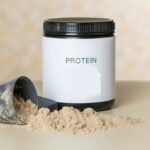A Brief Overview on Peppermint Essential Oil
Peppermint essential oil is pleasant, versatile and popular. It has many uses for physical and mental ailments and is a key addition to any essential oil kit. It is both invigorating and calming, which makes it ideal for a variety of needs.
The peppermint plant itself is a fusion of spearmint and water mint. To obtain the essential oil from the plant, it is heated under pressure in a sealed tub. This vaporizes the oil. The vapors are cooled and condensed. Then, they flow into a separator, where the oil is divided from the water.
Peppermint oil is used as flavoring in the candy
gum and toothpaste industries. The main ingredients in the oil are menthol and menthone.
This oil makes your skin feel cool when it is applied topically. It calms digestive distress. It even has antimicrobial properties, which is why peppermint is often used in toothpaste and mouthwash. Peppermint oil has also been found to demonstrate antioxidant activity.
History of Peppermint Oil
The history of peppermint is long. The name comes from Greek mythology. Although there are several accounts of the tale, in the most well-known version, Hades loved a nymph named Minthe. His jealous wife, Persephone, transformed Minthe into a plant that would constantly be underfoot. The livid Hades made the plant have a fragrant, minty aroma so that everyone would remember Minthe as they walked on the herb.
Dried peppermint has been found in Egyptian crypts dating back to 1,000 B.C. It was also used by the Romans to help improve digestion. The plant was also popular as a ground cover because of the aroma that it released when it was walked on.
In the U.S., peppermint was first grown in Massachusetts in 1790. Steam distillation began in 1846 to release the oils without boiling the plant. This enhanced the oil’s quality and boosted production.
The mint industry was an important part of American history. Peppermint-flavored Colgate toothpaste was introduced in 1877. In the late 1800s, peppermint was planted throughout Michigan and Indiana to make use of otherwise useless land. Wrigley chewing gum was introduced in the early 1900s. The U.S. claims 75 percent of the global peppermint oil production today.
Uses of Peppermint Oil
Peppermint oil has been used by native people around the world for centuries. It is anti-inflammatory and has antiseptic properties. In the body, it works to cleanse, detoxify and purify. It can help to remove toxins from the body.
Part of this benefit comes from its ability to stimulate the circulatory and lymphatic system. It mobilizes the body’s own ability to eliminate waste and unwanted chemicals.
You might be most familiar with peppermint essential oil’s use as a digestive aid. Restaurants often give out peppermints following a meal, and peppermint tea is often recommended to soothe an upset stomach.
Peppermint can help cause spasms in your intestines that can lead to pain and digestive distress. It also helps the brain send out signals that it’s full after a meal. This can prevent you from overeating if you add a few drops of peppermint essential oil to your water.
Emotionally, peppermint has been associated with calming as well as enlivening qualities. If you are feeling fatigued and unfocused, you can use peppermint essential oil as aromatherapy. Inhaling the oil can reinvigorate you.
The oil can also help improve memory, concentration and focus. It has been used to calm the nerves in people who experience anxiety.
Some other peppermint essential oil uses are:
- Alleviating headaches
- Lowering fever
- Improving bad breath
- Managing gas
- Easing heartburn
- Relieving nausea
- Soothing sore muscles
How to Use Peppermint Essential Oil
If you’re using peppermint essential oil topically, such as on the forehead to soothe a headache, never apply the oil directly to the skin. The oil should always be diluted with a carrier oil.
Even just using one drop of essential oil on the skin can cause sensitization. When sensitization occurs, you can develop an uncomfortable or itchy rash. You may also experience respiratory issues or allergic reactions. Many people who become sensitized to an essential oil are permanently affected. You may experience reactions to other products that contain the essential oil.
A safe guideline is to make a 2% dilution with the essential oil. To do this, add approximately 12 drops of the essential oil to 1 oz. of carrier oil. The carrier oil can be coconut oil, olive oil, jojoba oil, rosehip oil or any other oil that can be used on the skin for moisturizing purposes.
It can be dangerous to breathe in too much peppermint oil. Therefore, it is not often recommended for use in a diffuser. However, using it for aromatherapy by taking a few whiffs is considered safe. Aromatherapy can help to cold and flu treatment
The Best Essential Oil Uses
How can you start using peppermint essential oil in your own life? These are some of the top peppermint essential oil uses that can help improve your physical and mental health.
- Muscle soreness – Many muscle rubs include menthol or other cooling chemicals. Peppermint essential oil is a natural way to bring this cooling effect to sore muscles. One study demonstrated that peppermint oil helped improve symptoms of fibromyalgia and myofascial pain syndrome.
- Opening the respiratory tract – If you have a cold or allergies, breathing in peppermint oil can help clear your sinuses and make a scratchy throat feel better.
- Aching joints – When you have aching joints, a bath can feel good. However, sometimes the cold dampness can make your joints feel worse. Mixing peppermint oil with lavender oil in a diluted solution and rubbing it on each joint can help.
- Helps with digestion – If you want to stave off cravings and curb your desire to overeat, apply some diluted peppermint oil to your temples before a meal, or take a sniff directly from the bottle.
If you have a stomach ache, nausea, bloating or indigestion, diffusing peppermint oil or adding a drop to your water can help. Simply rubbing the diluted oil on the belly can help with digestive distress.
Research shows that peppermint oil is even effective for helping with nausea caused by chemotherapy. It has also helped improve symptoms in people with irritable bowel syndrome, or IBS.
- Repels pests – Ticks, ants, spiders, cockroaches and lice are repelled by peppermint essential oil. If you use peppermint oil as part of your cleaning routine, you can prevent these pests from entering your home. Peppermint oil can even keep mice away. One way to repel mosquitoes is to mix peppermint oil with a carrier oil, witch hazel or water and apply it to the skin.
- Soothes problem skin – If you have hives, allergies or dry skin, applying peppermint oil to the affected areas can stop you from scratching. It can also alleviate symptoms of eczema or psoriasis. Peppermint oil has also been found to improve acne. If you’re sunburned, the cooling effects of the oil can make your skin feel better.
- Freshens breath and helps prevent cavities – Bad breath and cavities are caused by bacteria in the mouth. Research shows that peppermint essential oil is effective at destroying the pathogens that can cause these problems.
- Stimulates the scalp – Adding peppermint oil to your shampoo can stimulate the scalp and get rid of dandruff. It can also help with hair growth and add shine to coarse or frizzy hair.
Considerations for Using Peppermint Essential Oil
Essential oils are generally safe, but they should be treated like medications. They are not safe for everyone, and they can interfere with medical conditions and certain drugs. Pregnant and nursing women should not use peppermint oil liberally toward the end of pregnancy or while breastfeeding, because the oil can diminish the milk supply.
Children under the age of 7 should not use undiluted peppermint oil. Some say that you should not use it at all on children under the age of 6. If children under the age of 30 months inhale peppermint oil, it could cause breathing problems. It can also cause respiratory distress if applied directly to a young child’s or infant’s skin, including the bottoms of the feet.
Although peppermint oil can be effective for helping symptoms of digestive distress, you might not want to use it if you have gastroesophageal reflux disease (GERD) or a hiatal hernia. The oil can make the sphincter at the bottom of the esophagus relax, causing stomach acid to rise up and cause heartburn. Peppermint oil can also react with antacids, increasing heartburn symptoms.
If you’re using peppermint oil daily to gain more energy, research shows that it could begin to interfere with your sleep.
If you find peppermint oil to be especially soothing for any physical or mental symptoms that you have, you can also try adding fresh peppermint to your water or displaying it in vases in your house. This can help you get the benefits from the herb without overdoing it on the oil. However, using the essential oil sparingly can help you in many ways






Leave a Reply